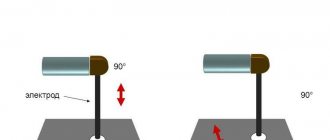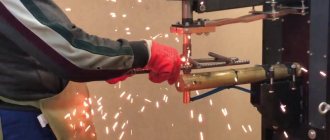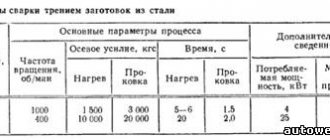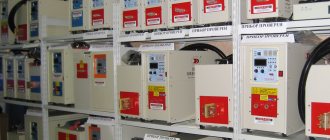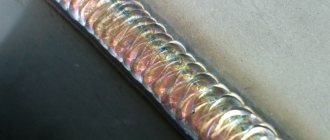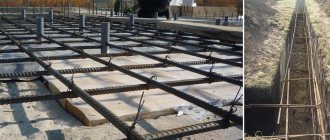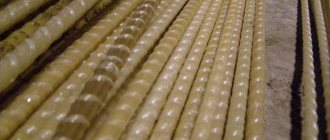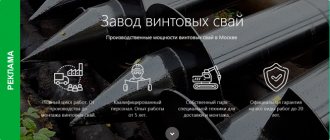When constructing buildings and premises of various types of functionality, one of the most important points of the work performed is the installation of a reliable foundation. If the load-bearing foundation is not made very well, not in accordance with existing norms and standards, any house will probably not last long - at least regular cracks and major repairs will be ensured. Therefore, the issue of strengthening the fundamental structure with the help of reinforcement is always very acute - special metal rods, the iron base of any reinforced concrete product. You can achieve the desired strength in two ways:
- viscous reinforcement elements using tying wire;
- welding reinforcing bars into a single fixed frame.
For professional builders, when the question arises whether to knit or weld, and whether it is possible to weld reinforcement for the foundation, each specific case is considered, and the decision is made individually, taking into account all the conditions involved.
By the way, construction experts have not yet come to a consensus on which reinforcement method is considered more preferable. Both knitting and welding of foundation reinforcement have their supporters.
Welding for foundation reinforcement
Pros and cons of welding work
Before choosing one of the methods of reinforcing the foundation for a building under construction, even at the design stage, you should consider the strengths and weaknesses of each of them. Among the advantages of welding for connecting reinforcing elements, one can immediately note their speed and the production of a more durable, indestructible frame. This method is the most optimal for the construction of large, large-scale objects, for example, industrial premises of various types. However, welding reinforcement for the foundation also has its disadvantages, which are discussed below.
- It is highly not recommended by experts to use a welded connection of reinforcement in areas with increased seismic activity, or on moving soils (which, by the way, also include loose soils). Soils that are too mobile will inevitably, over time, cause the foundation produced by this method to shrink. Because of it, rigid welded joints in the structure can break. In such conditions, it is recommended to use wire and a method of connecting reinforcement - knitting: it holds the frame together relatively movably and firmly, but allows the foundation elements to move within certain limits even with noticeable ground movements. This limitation significantly reduces the scope of welding when laying load-bearing structures of buildings.
- The welding process also affects the elements being connected. The fittings are exposed to very high temperatures. As a result, some destruction of the metal structure occurs in the places where welding work is carried out, which negatively affects the overall rigidity and strength of the frame itself.
Nevertheless, welding still remains the leading method of equipping foundations for large buildings.
Organization of work
When starting work on creating a reinforced frame using the knitting method, purchase the necessary tools and materials in advance. By following simple recommendations, you will quickly master the connection technique and be able to perform the assigned tasks efficiently:
- Place the bottom row of horizontal structural elements at a short distance from the ground surface - 4/6 cm. Wooden or plastic pads are suitable to ensure the required gap. Their task is to prevent the frame from coming into contact with the soil.
- Install vertical elements at a fixed distance from each other.
Keep your step even. Ensure that the bars remain stationary using locking devices. Protect metal from contact with the ground using non-metallic cup holders. It is important to comply with this requirement to avoid corrosion of the reinforcement in the future. The knitting process itself is different in that it can be done either directly at the site of construction of the building or in a special workshop - Proceed to fixing the frame elements. Pay special attention to the reliability of connections. They must withstand the stage of pouring concrete mixture without moving.
- When constructing a reinforcing frame in several tiers, maintain equal distances between horizontal and vertical elements. Provide additional fastening to the corners of the structure - they tend to move during pouring. Make sure that the corner parts of the reinforcement are bent inward and do not protrude beyond the base.
- Observe the requirements laid down in the technical specifications for the selection of grades and assortments of materials.
- Carry out simple strength tests on the frame after completion of the work. Place a board on the top tier of the structure and walk along it - the frame should remain motionless under the influence of human weight.
- Immediately before pouring concrete, additionally fix the entire structure to prevent vertical deviations.
Reinforcement cage welding process
For large volumes of construction work, the elements are welded together in the factory. Briefly, this process looks like this.
Preparation of reinforcement
- Preparation of reinforcement; checking the quality of elements. At this stage, reinforcement blanks are selected that meet the standards and certain characteristics.
- Cleaning of workpieces. At this stage, not only dirt and dust are removed from the reinforcement, but also traces of corrosion, if any. And the material is processed accordingly.
- Marking and cutting elements in accordance with the building plan. Measurements are taken according to the design and the material is cut into the required quantity.
- A horizontal structure is assembled from rods and tacked by welding.
- Vertical elements are placed at the calculated distance; their perpendicularity to the frame frame is checked.
- The rods are once again verified for adequacy of the entire reinforcement structure.
Welded reinforcement
At the last stage, final welding work is carried out to finally connect the elements into the frame planned by the project.
Welding process
Connecting reinforcement elements
This process can be carried out in several ways:
- end-to-end;
- overlap;
- crosswise;
- in a T-shaped manner.
Taurus and end-to-end are considered not very desirable. In both cases, the elements are connected at right angles, which means that the final product will show insufficient bending strength. However, such connections are still sometimes used if it is not possible to avoid such a connection for some objective reason. Usually, the length of the reinforcement is welded with an overlap, and the crossbars are fixed with a cross. Although, we note that, for example, American standards do not recognize cross intersections in the construction of foundations.
Before carrying out work on the frame, test welding must be carried out. Two small rods are taken for it; the elements are connected, and after cooling the seam is examined for quality. The appearance of cracks, the state of the resulting slag, and the depth of penetration of the reinforcement body are monitored. If at least one of the parameters does not seem to meet the standards and conditions, the current strength in the welding machine is adjusted or the electrodes are changed.
How to weld reinforcement
Possible welding problems
These types of problems occur most often.
- Electrode sticking. The current is insufficient, it should be increased.
- Burning a surface without sticking to it. The current is too high and needs to be reduced.
- Difficulties with “catching” the arc, the rod is burned through. An electrode with a smaller cross-section is required.
- Foaming of slag, burning of the electrode with a “visor”. The electrode is defective or on the verge of wear. To be replaced.
The welding technology itself is not too complicated; if necessary, work on constructing a frame for the supporting structure can be carried out directly on the construction site. If the construction volumes are small, often the workers constructing the foundation do just that.
Welding for stable soils
Minimizing negative impacts
It is clear that natural factors cannot be overcome (at least in most cases). However, it is considered quite possible to reduce the negative impact of welding on metal in construction work. Experts have developed a whole range of measures aimed at minimizing losses during welding operations.
- Selection of reinforcement for the frame. It is strongly recommended to use rods classified as A400C or A500C. Their diameter and carbon content in the metal are optimal for equipping the supporting structure by welding.
- Selection of electrodes. They must correspond to the diameter of the elements assembled into the frame. If relatively thin rods are to be used, most commercially available electrodes will suffice. If the reinforcement frame is constructed from elements with a diameter greater than 14 mm, you will have to stock up on specialized electrodes for these cases. Moreover, it is advisable to purchase those that are designed to work with low-carbon steel. Such electrodes have a less intense impact on the metal during welding and will provide a structure with greater strength.
- Welding machine. For welding reinforcement for the foundation, when connecting reinforcing elements, it is recommended to use equipment with continuously variable control of the supplied current. Insufficient current will not make it possible to achieve a reliable, durable and high-quality seam, which can subsequently lead to subsidence of the foundation, or even to the destruction of the building as a whole. An excessively intense current will overheat the metal, and the reinforcing element will become brittle after cooling.
Need a welding machine
- In order for the welded joint to be as strong as possible, it is necessary to press the welded elements together as tightly as possible. However, this is quite difficult to do. Some craftsmen advise using a grinding tool. The rods are cleaned to relative smoothness, and the connection area of the reinforcement increases.
And finally, there are recommendations in construction work for treating seams with anti-corrosion compounds. At the point of welding, the metal becomes more vulnerable to moisture, and the solution from which the foundation is poured contains plenty of it and takes a long time to dry.
Rebar welding technology
Although welding reinforcement for the foundation is more labor-intensive than knitting, it is impossible to completely abandon it. On large construction sites, when constructing multi-story buildings, it is impossible to do without welding. The foundations of such structures bear increased loads, and therefore the strength requirements are appropriate. To weld reinforcement for the foundation, use special brands of products - A400C or A500C. The diameter of the rods is within 3-5 centimeters. Resistance spot welding is used for the work. Considering the fact that when the metal overheats, changes in the structure occur, causing a weakening of the strength characteristics, it is desirable that the welding of reinforcement for the foundation takes place at specialized enterprises or is carried out on construction sites by qualified welders.
When welding, the strength of the reinforcement is reduced and the internal structure is damaged
The production of welded frames in industrial conditions is carried out in several stages:
- The technical control department checks the quality of materials that are planned to be used in the manufacture of the frame. Material that does not meet the requirements of standards and specifications is rejected;
- Round rolled steel made of St. 0 or St. 3, previously cleaned of rust and dirt, is straightened, marked, and cut to a given size. The elements are cleaned with an abrasive tool;
- the workpieces are connected into a flat structure. Spot welding of reinforcement is carried out with a workpiece diameter of up to 26 millimeters. When working with reinforcement of increased diameter, deformations of the structure occur due to strong heating during welding. To avoid distortion, the elements are lightly grabbed;
- Using special conductors, flat elements are installed vertically above each other at a calculated distance. Conductors are manufactured with a high degree of accuracy - deviations from the specified parameters do not exceed three millimeters;
- a preliminary bunch of elements is made;
- The compliance of the spatial design with the technical design is checked, the entire assembly as a whole is corrected, and the required length of welding seams is determined. To avoid deformation of elements from overheating, the sequence of welding joints is clearly defined;
- The spatial structure is finally welded.
Most often this method is used in places where the soil has a stable position, that is, it does not settle too much
When welding directly on a construction site, the procedure is similar. The only difference is the inconvenience of using arc welding. Therefore, when assembling a frame module on site, spot welding of reinforcement is used. It is mobile, and when equipped with special pliers, you can perform work even in a suspended state, with rotation to any angle.
Knitting method
Knitting is carried out using a specialized wire that connects the reinforcement bars to each other in the corners of the foundation structures. Knitting is quite easy to do if you know the basic principles of the work.
Knitting method
When the foundation has already been built, it may still sag in the ground for some time. This is due to the large mass of the entire structure. In this case, the knitting will give the foundation reinforcement being connected some freedom, the connections will remain in their proper places (they will not break, as is the case with welding, if the level of soil subsidence in the place chosen for construction is high enough). We can safely talk about using this method of knitting reinforcement even on the most difficult soils. The welding will not withstand the loads and will crack. This will not happen during mating. All connections in the foundation remain more or less movable. And this nuance does not entail the appearance of additional stress in the foundation structure.
Knitting is used on difficult ground
The simplicity and convenience of the knitting process is that everything is done directly on site (for large structures, sometimes in a workshop). Simple tools are used, which (unlike welding) can be handled even by a less experienced builder. Most often, this is a special kind of hook; it allows you to connect several parts of the reinforcement to each other. The operation of the connection will require minimal costs - the effort of one worker is enough. When using this method, the strength of the entire structure will not decrease, and the structure of the metal will be preserved. Rigidity with reinforcement strength is at the proper level.
By the way, you can also acquire special tools for the job. Today, tying guns are widely available. The design is quite simple, and the cost is not too high, so you can afford it. In addition, the cost of work is reduced as a result. But you can also use an ordinary crochet hook.
Knitting technologies
Strengthening the foundation - what is it for?
A well-designed and high-quality foundation is a guarantee of the durability of the structure. A strong, indestructible base will prevent shrinkage, which causes cracks and subsequent destruction of the structure. Therefore, strengthening the foundation is a serious issue that cannot be treated superficially. Increasing the strength of the foundation is achieved by reinforcing the structure with metal mesh or rods of a certain diameter.
Should the reinforcement for the foundation be welded or knitted - this is the main question that many people think about
foundation is most often installed . You can save money and fill the foundation with regular concrete without additional reinforcement. Most likely, after some time, cracks and deformations will appear in the foundation. To prevent undesirable consequences, carry out reinforcement work with a steel frame that:
- Increases strength.
- Evenly distributes the load.
- Compensates for soil reactions during freezing.
- Will increase the service life of the structure.
READ Composite reinforcement and metal reinforcement comparison
Reinforcement in concrete will protect the foundation from cracking and destruction.
Boil or knit? That is the question…
Based on the above, we draw conclusions about: which methods are better to use in private construction - bonding or welding? Undoubtedly, each of the discussed methods is famous for its advantages, but there are also disadvantages. Welding proceeds at maximum speed, and knitting is a rather lengthy process, although it does not require a special apparatus. It is best used in the construction of private houses, cottages, outbuildings, and baths. It is in these cases that the method is most effective.
And when constructing buildings with large dimensions, attention turns to welding. Rods are used that have a diameter of more than . Therefore, connections using wire will present certain difficulties. Welding in this case will be the most correct solution.
However, the disadvantages of the welding method technology do not make it possible to use it on so-called difficult soils (and swampy areas practically exclude this method). After all, if a connection is used by welding, it will not withstand the external stresses that arise during shrinkage, which will lead to a loss of integrity of the structures and a loss of their rigidity. Tying technologies will ensure the most flexible connection of reinforcement on difficult soils. Here the rods, depending on the condition of the soil, will be able to move spatially without causing damage to the entire structure.
Video about methods of connecting reinforcement using various methods:
Which connection method does Honor prefer?
Before you finally decide whether to knit or weld a reinforcement frame, weigh the pros and cons. Each connection method has positive and negative aspects. Recommendations from specialists will help you choose the optimal solution. When constructing multi-storey buildings with an increased load on the foundation, welding is clearly chosen. The diameter of the steel bar is selected to be at least 30 millimeters. Why should oversized reinforcement be preferred to Honor? Answer: to minimize the risk of burnout, which will weaken the strength of the connection.
The disadvantages of the welding method, which limits the scope of application, include the occurrence of internal stresses, which increase the likelihood of cracking during casting. It is problematic to use in seismically unstable areas and on complex soils, where the shrinkage process takes a long time and can cause destruction.
But we must not forget about the advantages of welding: The speed of work, which can significantly reduce construction time.
- Increased rigidity of the finished module.
- Obtaining a solid foundation that can withstand heavy loads.
For private buildings, it is better to use the knitting method, which:
- it is simple and accessible, even for those starting a construction career;
- eliminates the need to search for a welding machine and a high-class welder capable of performing work without defects;
- does not create additional stress at the joints;
- allows the use of cheaper reinforcement of reduced cross-section for reinforcement.
The disadvantages include slight rigidity, which is not particularly important when constructing low-rise buildings.

